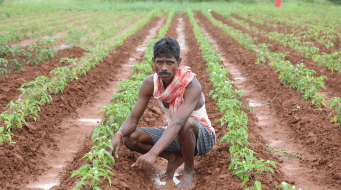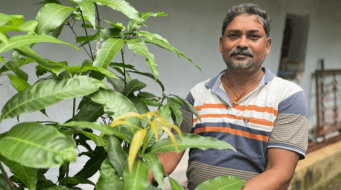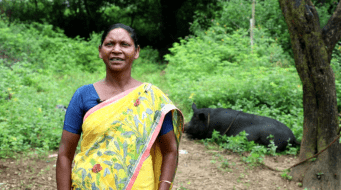By Dr. Eshwer Kale
The world is today facing an unprecedented water crisis, both in access and availability. Cape Town in South Africa reached ‘day zero’ water status in 2018. India, according to the NITI Aayog, is facing the worst water crisis in its history, with an estimated 600 million people having to deal with high to extreme water scarcity.

Climate change is adding to the water scarcity problem with increasing erratic rainfall affecting runoff and groundwater recharge cycle. This statistic is just the tip of the iceberg, and the situation is projected to become even worse if appropriate actions are not taken. To be more responsible and sensible in water use, virtual water and water footprint are very useful concepts for an individual and community to deal with water problems.
Direct and indirect water usage
We as individuals use water directly and indirectly. For example, from waking up in the morning, we use water directly to flush toilets, brushing and bathing, washing and cleaning, gardening drinking, etc., but more than this, we use and consume more amount of water indirectly in form of products or goods used to wear, eat, use, and buy. All these products, goods, and services take water to make. For example, the newspaper we read in the morning, takes an ample amount of water to produce the paper from the raw material in the factory and then in printing and overall transport to reach your home. While reading the paper in the morning, we are used to taking a cup of tea, Physically it requires less than a cup of water.
However, when we consider the amount of sugar, tea, and milk, which we add in the tea, although not physically visible, each cup of tea takes 35 liters of water, and if we prepare a cup of coffee it takes 140 liters of water. All this water, which is invisible in such items and goods is known as “Virtual Water” to make it. Therefore, every product we consume contains virtual water. In 1993, Professor John Allan (2008 Stockholm Water Prize Laureate), demonstrated the concept of virtual water which measures how water is embedded in the production and trade of food and consumer products.
Water footprint
“Water footprint” is a useful tool to assess the amount of virtual water get used/consumed in making different goods and services. We can measure the water footprint of a product like jeans pant, a crop produce, organization, individual or/and family, company or firm, and any state or country, to know how much water, directly and indirectly, they consume or take to make it.

There are several online tools with different assumptions on water-use. Let us try to calculate individual water footprint as an exercise to understand our water consumption; it will take maximum five minutes. Click here, check your water footprint, compare it with your friends and colleagues, and discuss it. You will observe our lifestyle, food habits and water-use practices are key in deciding our water footprints.
You will find that the concept of virtual water and water footprints are immensely useful for:
- Understanding where and how we can save more water, for direct as well as direct use.
- Knowing what amount of water is required to make the goods, crops, and services.
- Planning water security, how we can plan for reducing our export of virtual water from our areas.
- To understand the severity of the issue of food loss and waste where in India 40% of food produced gets wasted, and thus a huge amount of water it takes to make. (When we waste food, we also waste all the energy, water and material it takes to grow, harvest, transport, and package it. When consuming all these resources, if food goes to the landfill and rots, it produces greenhouse gases and about 11% of all the greenhouse gas emissions that come from the food system could be reduced if we stop wasting food)

I encourage you to discuss the concepts of virtual water and water footprint with your friends and colleagues and share your reflections, perspectives, doubts, and points with us. Please write to us at eshwer.kale@wotr.org.in with any feedback, so so that we can try to address them in the next blog on the same topic.





